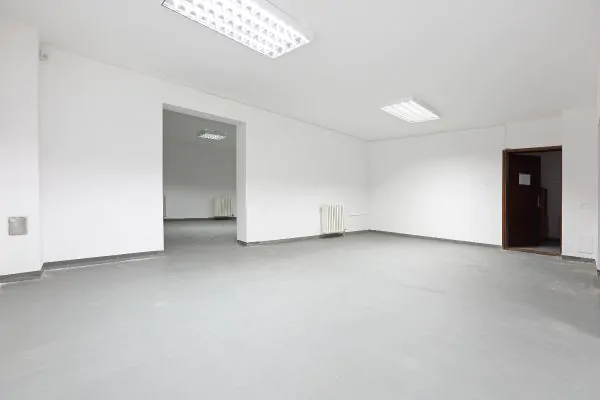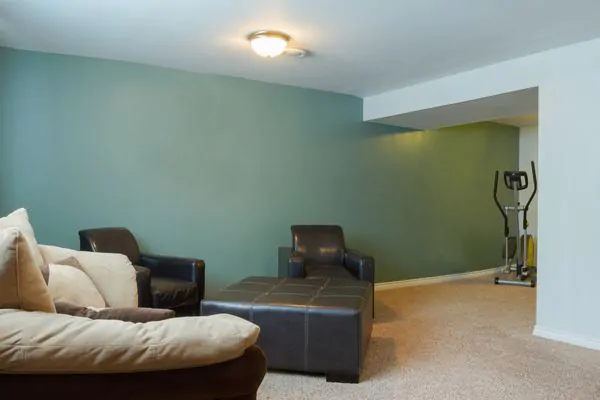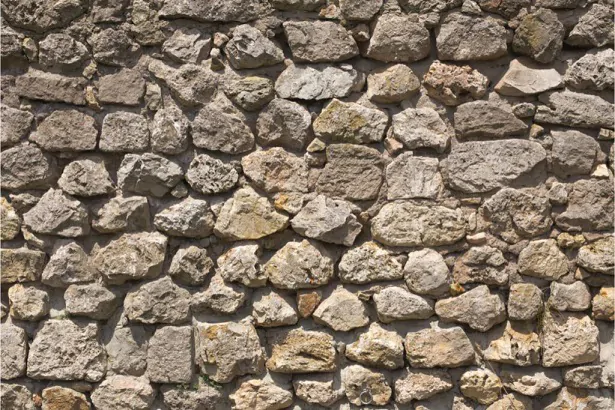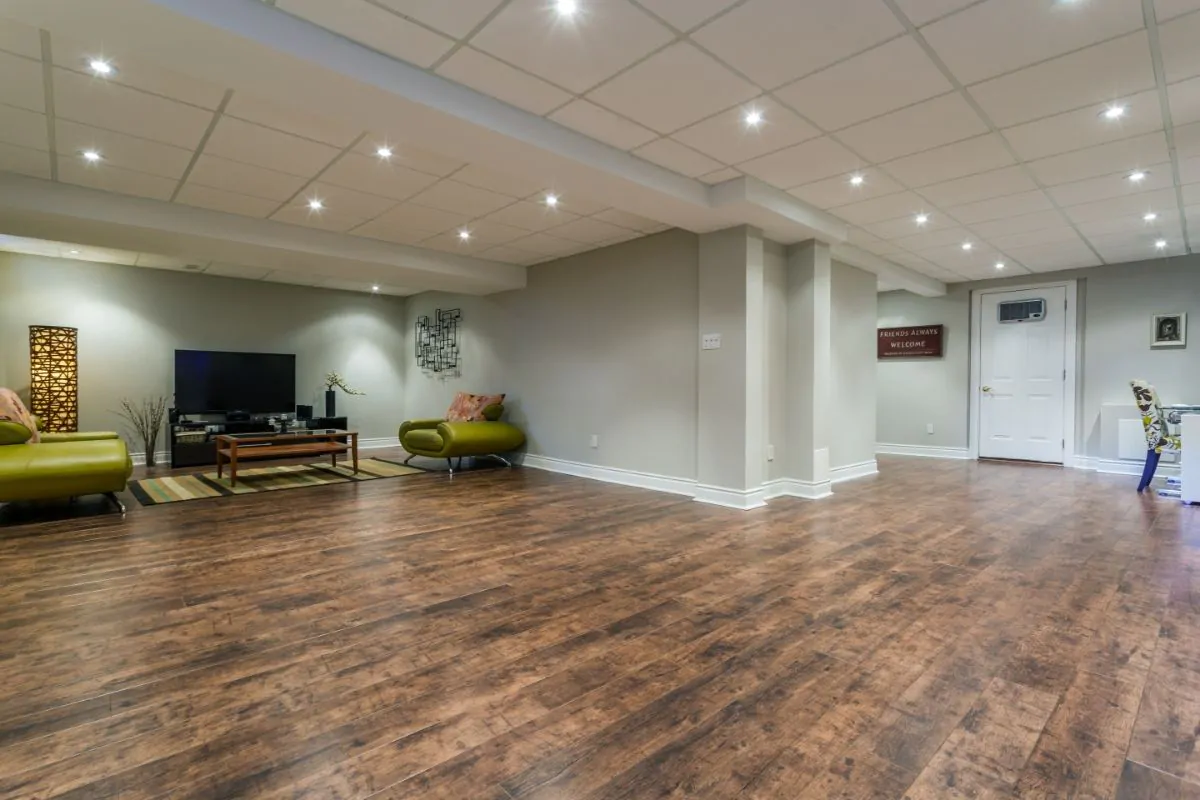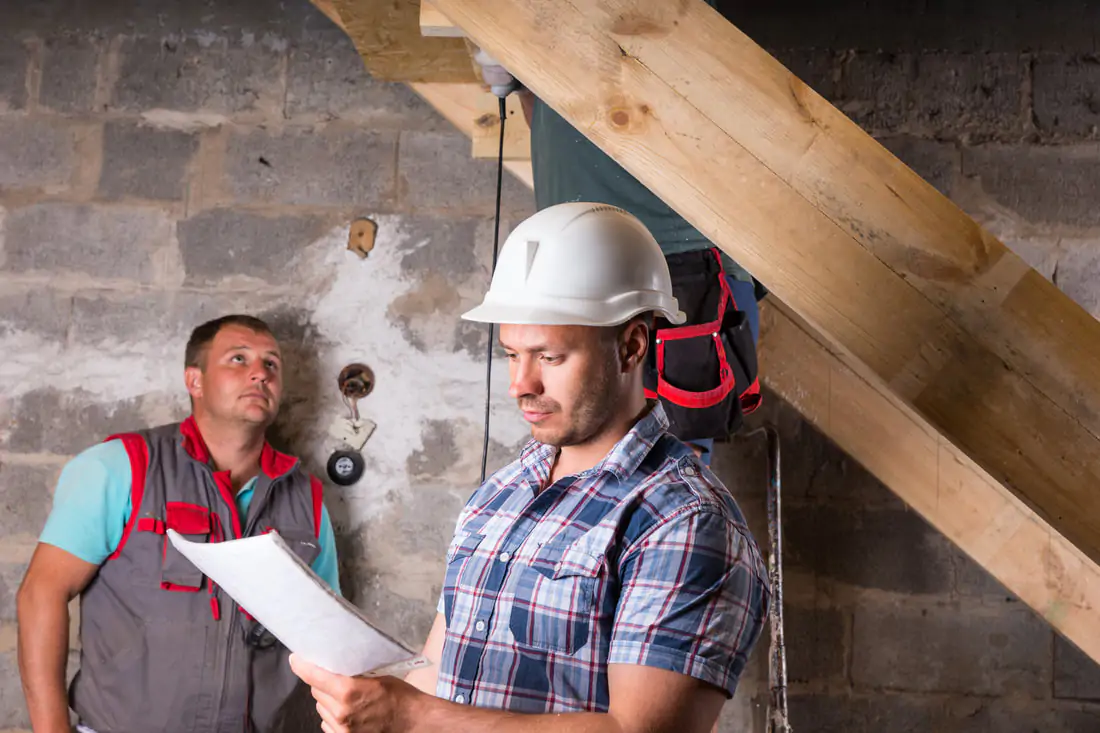
Detecting black mold in your basement can be alarming. Often regarded as an indicator of underlying problems, it’s essential to address this issue promptly to safeguard your home and health. We have years of expertise handling household molds, especially the notorious black variety that tends to invade basements.
This background equips us with the knowledge to combat this issue effectively.
Black mold isn’t just unsightly; it poses significant risks to your well-being, making its removal paramount for a healthy living environment. This article will explore proven strategies for identifying, removing, and preventing black mold in your basement walls.
Armed with these insights, you’re set for a cleaner and safer home. Stay tuned!
Understanding Black Mold in Basement Walls
If left untreated, black mold in basement walls poses health risks and structural damage. Understanding the causes of black mold growth and recognizing its signs are essential for effective removal.

What is black mold?
Black mold, or Stachybotrys chartarum, is a fungus that thrives in damp and humid areas. It often appears on basement walls where moisture levels are high. If the conditions are right, this mold can grow rapidly, spreading across surfaces and releasing spores into the air.
People searching for how to find mold in their basements might spot black mold by its distinctive color and texture. Homeowners must identify this issue early because prolonged exposure can lead to health symptoms linked with black mold in the basement.
Quick action can prevent it from becoming a bigger problem that affects the entire home.
Causes of mold growth
They understand how black mold forms in your basement, vital to preventing and removing it. Mold thrives in damp, dark, and poorly ventilated spaces, making basements a typical hotspot for growth.
Moisture is the primary factor that causes mold to grow on basement walls. This moisture can come from leaks, high humidity levels, or condensation. Poor ventilation exacerbates these conditions by trapping moist air inside.
Leaks in pipes or external walls allow water to seep into the basement, creating an ideal environment for mold spores to settle and multiply. High humidity levels accelerate mold growth and lead to condensation on more excellent surfaces like basement walls and floors.
These wet surfaces invite mold spores in the air to colonize and spread quickly across the affected areas. Addressing these moisture sources promptly reduces the risk of black mold taking hold of your basement walls.
Signs of Black Mold in Basement
A musty odor and visible black patches are indicators of mold in the basement. If you notice these signs, immediate action is essential to prevent mold growth.
Musty odor
A musty odor often serves as the first clue that black mold is growing in your basement. This smell is distinctive: earthy, damp, and hinting at hidden mold growth even before it becomes visible on basement walls.
If you detect this scent, start looking for mold in common problem areas around your home.
Addressing the musty odor requires more than airing out the space or masking it with fragrances. You need to find and eliminate the source of moisture feeding the mold. Adequate ventilation and dehumidification can also help control humidity levels in your basement, reducing the risk of future black mold growth.
Visible black patches
If you notice visible black mold on basement walls, it’s a strong indicator of the presence of black mold. Addressing this issue promptly is crucial to prevent further spread and potential health risks.
Begin by carefully inspecting the affected areas for any signs of moisture or leaks contributing to mold growth. Once identified, take steps to eliminate the source of moisture, such as fixing leaks or improving ventilation.
In addition, consider using protective gear and following proper cleanup procedures when addressing the mold infestation.
Health symptoms
If you’ve noticed visible black patches on your basement walls, you should be aware of the potential health symptoms associated with black mold exposure. These may include respiratory issues like coughing and wheezing, as well as nasal and sinus congestion.
Some individuals may also experience throat irritation or skin rashes when exposed to black mold. Additionally, persistent headaches and fatigue could be indicators of mold-related health issues.
Watch for these signs, as they could point to harmful black mold in your basement.
Steps to Remove Black Mold

Identifying and addressing the moisture source is crucial in removing black mold. Protect yourself and prepare the area, then test for moisture before treatment.
Identify and address moisture source.
To effectively remove black mold from your basement walls, identify and address the moisture source contributing to mold growth. Look for leaks, water seepage, or humidity issues in the basement.
Fixing these problems is crucial to preventing future mold growth. If necessary, use a dehumidifier to reduce excess moisture in the air. By eliminating the source of moisture, you can stop black mold from returning.
Once you’ve addressed the moisture issue in your basement, you’ll be better positioned to proceed with other steps for effectively removing black mold.
Protection and preparation
To remove black mold from your basement walls, protect yourself with gloves, goggles, and a mask before cleaning. Cover nearby furniture and flooring to prevent mold spores from spreading.
Open windows and use fans for ventilation during cleanup.
Prepare the affected area by isolating it from the rest of the basement using plastic sheeting or tarps to contain any dust or debris generated during removal. This will help prevent mold spores from spreading to other areas of your home.
Testing for moisture
To detect moisture, use a moisture meter on basement walls and floors. Monitor humidity levels with a hygrometer to pinpoint areas at risk for mold growth. Use plastic sheeting as a condensation test – tape it to the wall for 24 hours and check for dampness.
Inspect gutters, downspouts, and drainpipes for leaks; repair them immediately. Look for cracks in the foundation or walls that allow water seepage; seal with waterproof material. Ensure proper ventilation in the basement by using fans or dehumidifiers to reduce moisture levels.
Utilize these methods regularly to maintain optimal conditions and prevent mold growth.
Treatment methods
After testing for moisture, it’s time to address the black mold in your basement walls. Scrub the affected areas with a mixture of water and detergent, using a brush to scrub the mold off the wall or any other surface.
For stubborn patches, use a solution of one cup of bleach per gallon of water, but avoid mixing bleach with ammonia or other household cleaners. Rinse the area thoroughly and dry completely.
Once clean, apply mold-resistant paint to prevent future growth. Consider using dehumidifiers to keep humidity levels low in your basement and promote ventilation. Additionally, ensure proper insulation to prevent condensation on cold surfaces.
Proper cleanup
After treating the affected area with an approved solution, use a scrub brush to remove black mold from the basement walls physically. Ensure all visible mold growth is completely removed and disposed of in sealed bags.
Clean the surrounding area with a damp cloth and dry it thoroughly to prevent future moisture-related issues.
Next, consider applying mold-resistant paint or sealant to the treated surface, which will provide an additional layer of protection against future mold growth. Take precautions when cleaning up black mold in your basement by wearing protective gear such as gloves, goggles, and a mask to avoid exposure to harmful spores.
Preventing Future Mold Growth
To prevent future mold growth, fix any leaks or water damage in the basement. Regularly check and maintain the basement for moisture and ensure proper ventilation
Fixing leaks or water damage.
Fix leaks or water damage promptly. Repair cracks in the basement walls and floors to prevent moisture from seeping in. Maintain gutters, downspouts, and grading to ensure proper drainage around your home’s foundation.
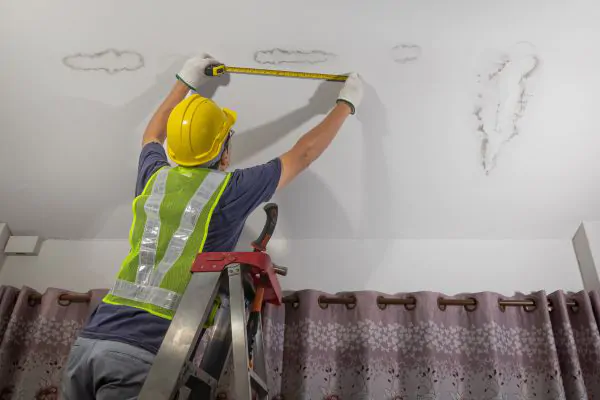
Fix any plumbing leaks immediately to prevent excess moisture buildup.
Look for any signs of water damage, such as discoloration or peeling paint on the walls or ceiling. Address potential sources of leaks, such as faulty seals around windows and doors, and make necessary repairs.
I am regularly checking and maintaining the basement for moisture.
To prevent black mold from growing in your basement, regularly check and maintain the area for moisture. Inspect for any signs of leaks, water damage, or condensation on walls and floors.
Look for musty odors or dampness in the air, as these could signal excess moisture. Consider using a dehumidifier to keep humidity levels low and ensure proper ventilation to promote airflow and reduce dampness.
By staying proactive with regular checks and maintenance, you can effectively minimize the risk of black mold in your basement.
Proper ventilation
Ensure proper ventilation in your basement to prevent moisture buildup and discourage mold growth. Install exhaust fans or open windows regularly to allow fresh air to circulate and eliminate stagnant, humid conditions.
Adequate airflow is crucial in reducing the potential for mold spores to settle and increase on surfaces, helping maintain a dry environment that inhibits mold formation. Regularly inspect your basement for any mold symptoms, as good airflow is essential in preventing black mold from taking hold.
Incorporating proper ventilation into your basement maintenance routine can significantly minimize the risk of black mold growth. Ensuring efficient air circulation creates an inhospitable environment for mold while promoting a healthier living space free from harmful contaminants.
Using mold-resistant products
Using mold-resistant products is crucial to preventing future mold growth. Look for paints, sealants, and building materials labeled as mold-resistant or mold-inhibiting. When selecting
products, prioritize those designed for moist environments like basements; these can help keep the area dry and free from mold growth.
To create a hostile environment for black mold, opt for moisture-resistant drywall and insulation, as well as mildew-resistant paint. Choosing such products will significantly reduce the likelihood of black mold reappearing on your basement walls.
Furthermore, consider investing in a dehumidifier specifically engineered to control basement humidity levels. This appliance plays a vital role in reducing moisture in the air – a key component of preventing black mold growth.
Hiring Professionals for Mold Removal
When dealing with extensive or stubborn black mold in your basement, it’s essential to consider hiring basement professionals for mold removal. Professional mold remediation experts have the necessary skills, experience, and equipment to effectively and safely address severe mold infestations.
Enlisting professional help can help you rest easier, as the root cause of the issue is identified and resolved comprehensively, preventing future recurrences.
Professionals utilize advanced techniques and products to handle mold removal efficiently. They have the expertise to accurately assess the extent of the infestation and develop a tailored plan for effective eradication.
Furthermore, their knowledge allows them to navigate complexities related to moisture control and ventilation system improvements, providing you with a comprehensive solution for sustained mold prevention.
Consider reaching out to certified professionals if you’re facing challenging basement black mold issues. They can provide expert assistance in safeguarding your home from further damage.
When to seek professional help
If the black mold covers a large area, you may need professional help. Professional intervention is necessary for extensive mold infestations and when dealing with hidden molds behind walls or in hard-to-reach areas.
If you have health concerns that seem to be aggravated by mold, it’s essential to seek the assistance of professionals.
Benefits of professional mold remediation
Professionals utilize advanced equipment and techniques to identify and eliminate mold from your basement walls efficiently. This ensures thorough removal, prevents the risk of regrowth, and safeguards your family’s health.
Hiring experts for mold remediation also saves you time, effort, and potential health hazards associated with DIY methods or incomplete removal processes.
For those seeking effective methods for removing black mold in their basement walls, understanding the benefits of professional mold remediation is vital.
Conclusion
Effective methods for removing black mold in basement walls involve:
- Identifying and addressing the moisture source.
- Preparing for protection.
- Testing for moisture.
- Applying treatment methods.
- Ensuring proper cleanup.

Preventing future mold growth requires fixing leaks or water damage, regularly checking for moisture, ensuring proper ventilation, using mold-resistant products, and knowing when to seek professional help.






